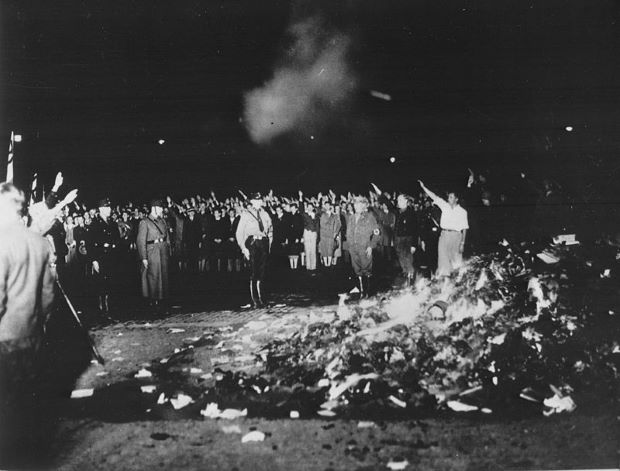The Nazi book burnings were a campaign conducted by the German Student Union to ceremonially burn books in Nazi Germany and Austria. The books targeted for burning were those viewed as being subversive or as representing ideologies opposed to Nazism. These included books written by Jewish, half-Jewish, communist, socialist, anarchist, liberal, pacifist, and sexologist authors among others. The initial books burned were those of Karl Marx and Karl Kautsky,[but came to include very many authors, including Albert Einstein, Helen Keller, writers in French and English, and effectively any book incompatible with Nazi ideology. In a campaign of cultural genocide, books were also burned en masse by the Nazis in occupied territories, such as in Poland.
On this day in 1933, the students burned upwards of 25,000 volumes of ‘un-German’ books in the square at the State Opera, Berlin, thereby presaging an era of uncompromising state censorship. In many other university towns, nationalist students marched in torch lit parades against the ‘un-German’ spirit. The scripted rituals of this night called for high Nazi officials, professors, rectors, and student leaders to address the participants and spectators. At the meeting places, students threw the pillaged, banned books into the bonfires with a great joyous ceremony that included live music, singing, ‘fire oaths’, and incantations. In Berlin, some 40,000 people heard Joseph Goebbels deliver an address: “No to decadence and moral corruption!” Goebbels enjoined the crowd. “Yes to decency and morality in family and state! I consign to the flames the writings of Heinrich Mann, Ernst Glaeser, Erich Kästner.”
-Wikipedia
Photo Caption – Book burnings in Opernplatz (currently known as Bebelplatz) a public square in the central Mitte district of Berlin – Bundesarchiv



Comments are closed, but trackbacks and pingbacks are open.